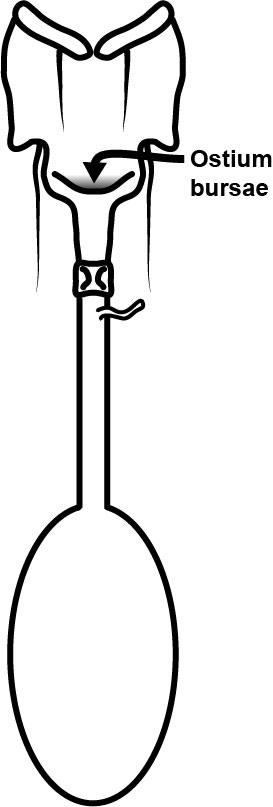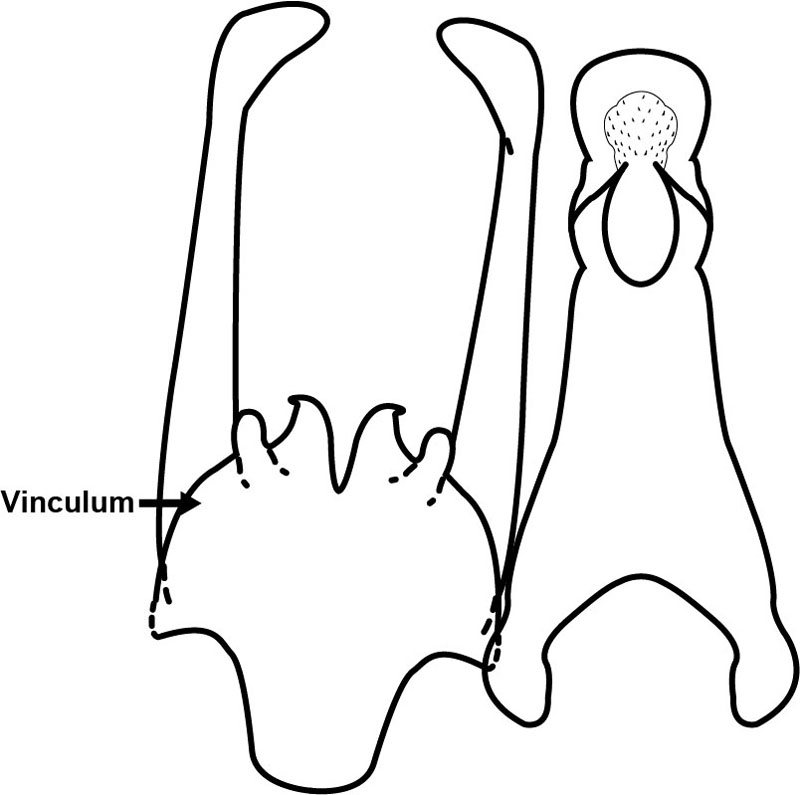Gnorimoschemini
Overview
The tribe Gnorimoschemini (Gelechiidae: Gelechiinae) includes about 900 species in more than 40 genera globally; because of their small size and nondescript brownish coloration, there are undoubtedly many other undescribed species. The taxonomic work on Gnorimoschemini was undertaken primarily by Dalibor Povolný between 1964 and 2004. Despite his efforts, it remains difficult to associate diagnostic characters with genera, at least any that non-specialists could easily recognize. Ongoing revisionary studies incorporating molecular evidence and formal analysis aim to amend these problems, but at this point, discussion of higher taxa would add little to the species-level identification. Dissection of genitalia is usually required to identify species.
The larvae are internal feeders in various tissues of herbaceous plants. Many genera are oligophagous on a few families, especially Asteraceae, Chenopodiaceae, and Solanaceae. The members of the last group are treated here. However, it is not at all clear which, if any, of these groups are monophyletic. Regardless of host family or feeding habit, the more general ecological trend in the Gnorimoschemini is their occurrence in xeric, sandy or halophytic habitats, although many of the economically important species occur wherever their hosts are.
Gnorimoschemini are probably a monophyletic group, but they are weakly differentiated from other tribes. A few characters that distinguish Gnorimoschemini from other Gelechiidae have been suggested, including: 1) a hook-shaped signumSignum:
Any sclerite, sclerotized area, or discrete granular area on the wall of the corpus bursae (pl. signa).
 , 2) a zone of lateral microtrichia around the ostium bursaeOstium bursae:
, 2) a zone of lateral microtrichia around the ostium bursaeOstium bursae:
Entrance of the bursa copulatrix, leading into the antrum and then to the ductus bursae.
 , 3) laterally dilated vinculumVinculum:
, 3) laterally dilated vinculumVinculum:
The ventral half of the male genitalia, from which the valvae arise.
 (shared with Gelechiini). However, these features have not been phylogenetically tested, and they work only in combination.
(shared with Gelechiini). However, these features have not been phylogenetically tested, and they work only in combination.
References
Huemer and Karsholt 2010Huemer and Karsholt 2010:
Huemer P and Karsholt O. 2010. Microlepidoptera of Europe. Vol. 6: Gelechiidae II (Gelechiinae: Gnorimoschemini). Apollo Books, Stenstrup.
Nazari and Landry 2012Nazari and Landry 2012:
Nazari V and Landry J-F. 2012. Gnorimoschemini fauna of Alberta (Lepidoptera: Gelechiidae). Agriculture and Agri-Food Canada, Ottawa, Ontario. 129 pp. http://www.biology.ualberta.ca/uasm/alg/downloads/ALG%20Bursary%202012%20Final%20Report%20Nazari_Landry_2012.pdf
Povolný 2002Povolný 2002:
Povolný D. 2002. Synopsis of the genera of the tribe Gnorimoschemini (Lepidoptera: Gelechiidae). Lepidoptera News (2002): 37–48.

